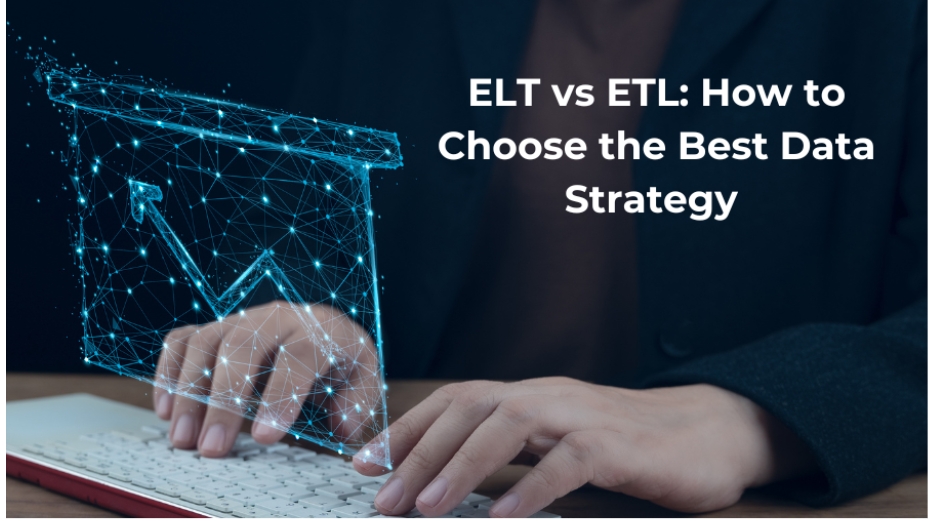Are you taking full advantage of your data? According to a Forbes report, over 95 percent of businesses consider the management of unstructured data a significant challenge. This highlights the critical need for robust data integration techniques. In the debate of ETL vs ELT, each method offers distinct approaches for generating actionable insights from data, impacting the efficiency of operations and analytical capabilities differently.
In this exposition on ETL versus ELT, we shall discuss which approach best suits different business settings and why making an informed decision when dealing with Data is essential.
Understanding Extract, Transform, and Load (ETL) Method
ETL stands for Extract, Transform, Load. ETL is a fundamental process in data warehousing and integration. It serves as a pipeline for collecting raw data from various sources, filtering it, transforming it into a desired format or structure, and delivering it to the intended destination(s) for analysis purposes. ETL comprises three main stages: extraction, transformation, and loading.
Advantages of ETL
- Improved Data Quality & Consistency: Preprocessing helps clean, deduplicate, and validate data, ensuring that only high quality is stored in the warehouse.
- Authorization: Notably, it is better to have ETL than other means when there are strict guidelines governing how personal information should be managed before uploading such details into the main storage area.
- Proven Technology and Expertise: ETL has been around for many years, and there are several trustworthy and well-developed ETL technologies out there. Building and managing ETL pipelines is a skill that many data professionals have.
Limitations of ETL
- Delayed Data Availability: Preprocessing can lead to significant delays in making data available for analysis.
- Inflexible processes: Modification of any transformation logic or source structure may necessitate substantive changes on code, thus making its flexibility inferior to other approaches
- Complexity and Development Time: Creating and managing intricate ETL pipelines can take a lot of effort and specific expertise. Costs for development and continuous maintenance may increase as a result.
Understanding Extract, Load, and Transform (ELT)
ELT stands for Extract, Load, Transform. It’s a data processing approach where data is first extracted from various sources, then loaded into a data warehouse or data lake in its raw format, and finally transformed as needed for analysis. This contrasts with ETL (Extract, Transform, Load) where transformation happens before loading. Let’s discuss the three main stages: extraction, loading, and transformation.
Advantages of ELT
- Flexibility and Scalability: ELT excels at handling large and diverse datasets, including unstructured data like social media feeds or sensor readings. The raw data in the data lake can be transformed for various purposes later, providing greater flexibility for evolving analytical needs.
- Simplified Development and Maintenance: ELT pipelines can be simpler to set up initially compared to complex ETL transformations. This reduces development time and ongoing maintenance overhead.
- Reduced Storage Costs: ELT avoids pre-transformation, potentially reducing storage requirements for intermediate processed data. This can be a significant cost-saving for massive datasets.
Limitations of ELT
- Potential Data Quality Issues: Since data is loaded raw, data quality checks and transformations happen later. This can lead to issues with data consistency and accuracy if not addressed properly within the data lake.
- Slower Query Performance: Raw data in the data lake may require additional processing before analysis, potentially impacting query performance compared to pre-transformed data in ETL
- Increased Processing Costs: While storage costs may be lower, complex transformations within the data lake can incur processing costs depending on the cloud platform used.
Comparing ETL and ELT
| Criteria | ETL (Extract, Transform, Load) | ELT (Extract, Load, Transform) |
| Process Flow | Data is extracted, transformed in a staging area (preprocessed), and then loaded into the data warehouse. | Data is extracted, loaded directly into the data warehouse, and transformed as needed within the warehouse. |
| Data Availability | Slower access to data as it is available only after the complete cycle of extraction, transformation, and loading. | Faster access to data as it is loaded first and transformed later. |
| Flexibility | Less flexible; changes in data sources or business requirements can require substantial modifications to ETL processes. | More flexible; can easily adapt to changes in data sources and allows on-the-fly transformations. |
| Security and Compliance | Typically, more secure for sensitive data as transformation occurs before data is loaded, allowing for cleansing and masking. | Less secure for sensitive data unless robust security measures are in place, as raw data is loaded first. |
| Infrastructure Requirements | Requires less computational power in the data warehouse since transformations are handled before loading. | Requires a robust data warehouse capable of handling intensive transformations and large volumes of data. |
| Cost Efficiency | Potentially higher operational costs due to the need for a dedicated ETL server and more complex data processing. | Potentially lower operational costs as transformations leverage the existing data warehouse’s computational power. |
| Scalability | Less scalable with increasing data volumes; processing large data sets can be time-consuming and resource intensive. | Highly scalable, especially effective with large and complex data sets due to in-database transformations. |
| Best Use Cases | Ideal for environments where data integrity and quality are critical, such as in regulated industries. | Suited for scenarios requiring quick data availability and handling of large, unstructured data sets. |
Decision Factors in Choosing ETL vs. ELT
When choosing between ETL and ELT for data management, consider these factors:
1. Need for Real-Time Processing
ELT is best suited for scenarios where data needs to be accessed in real-time as it loads data into the warehouse before transformations occur. Therefore, users can do data analysis faster. On the other hand, ETL is suitable for scenarios where immediate access to data is unnecessary since it processes data in batches.
2. Data Security and Compliance
In the case of strict compliance and security mandates, ETL may be more appropriate. Data transformation happens before loading in ETL whereby sensitive information can be removed, masked or encrypted based on regulations such as GDPR or HIPAA. ELT requires strong security measures inside the data warehouse due to its storage of raw data.
3.Infrastructure and Technology
The choice could come down to whether your infrastructure is able to handle the computational requirements of an ELT, which requires a huge amount of computing power within a data warehouse. For weaker systems, sometimes ETL makes sense because it carries out most processing outside the confines of a data warehouse.
4. Cost Considerations
Simplified infrastructure and less maintenance potentially translate into lower long-run costs through processing transformations at the storage facility level, thus making ELT cheaper. Still, this might be countered by higher specifications for warehousing systems.
5. Scalability Requirements
Generally, if dealing with large volumes of rapidly growing business intelligence datasets, consider ELT. This is because it effectively works with vast amounts of unprocessed information that utilize high-performance capabilities found in modern-day warehouses. However, as the volume increases in ETL, it becomes less efficient due to some preprocessing steps.
6. Expertise Availability
The decision between ETL and ELT can also be influenced by the availability of skilled personnel. ETL, being the older of the two, has a larger pool of experienced professionals. ELT, on the other hand, is relatively new, and finding experts familiar with its intricacies may be more challenging.
7. Long-term Strategic Fit
Each method should be analyzed based on what it means for your organization’s data going forward. ELT offers flexibility for changes in data strategies that result from transformations since it is adaptive when dealing with data. ETL would have to change significantly to accommodate novel business requirements because of its structure.
Conclusion
In conclusion, ETL and ELT have advantages, and choosing one over the other primarily depends on specific business needs, data requirements, and existing technological infrastructure. Awareness of these subtleties helps businesses make informed decisions aligning with the data strategy to overcome significant data challenges. The evolution of data integration tools will continue impacting strategy as we move further, highlighting the significance of keeping up to date with technological advances to remain competitive in business.







